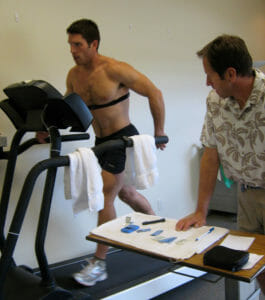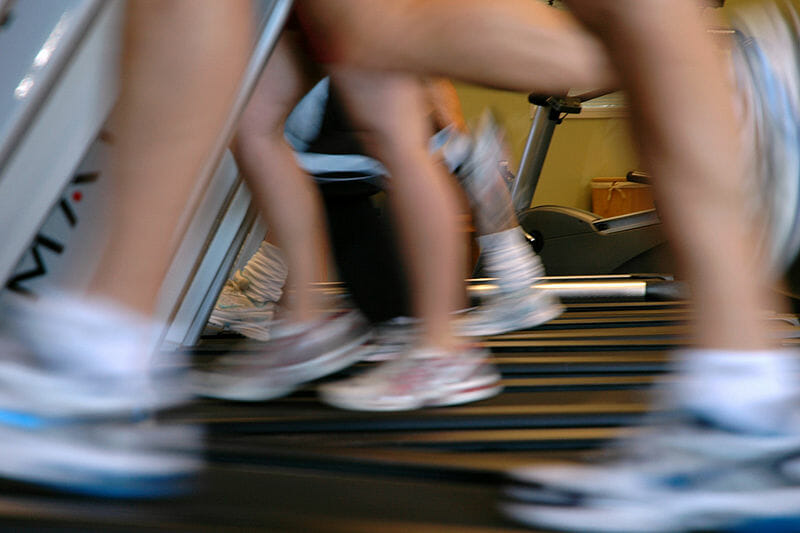Determining your Aerobic Threshold (AeT) heart rate is the first step in setting up your training intensity zones. These zones will help guide your training to ensure the development of a strong aerobic base. While the gold standard for measuring it would be a laboratory test, the following Aerobic Threshold treadmill test is an accessible way to determine a baseline for aerobic training. If you do not have access to a treadmill, we have also developed a DIY outdoor test.
Make sure to start the test well-fueled and hydrated.
Aerobic Threshold Treadmill Test
<
For this eight-step test, you will need a treadmill and a heart rate monitor.
- Make sure your heart rate monitor is on and working.
- Set incline of treadmill to 10 percent.
- Do a very slow walking warm-up for 15+ minutes at a very low speed/intensity. This pace should feel extremely easy for the first 10 minutes. Continue until you break a sweat. You are now warmed up and ready to begin.
- After the warm-up, without stopping, begin to increase speed gradually, 0.1–0.2 miles per hour every 3 minutes.
- For the entire test, make sure you are able to carry on a conversation.
- When breathing through your nose becomes noisy and uncomfortable or you can no longer speak in complete sentences, note your heart rate and slow down 0.2 mph, or about 2–5 bpm.
- Find the speed just below the uncomfortable nose breathing that you can hold for 15 minutes while only breathing through your nose. Note this heart rate! There may only be a 2–3 bpm difference between very easy breathing and unsustainable breathing.
- The average heart rate you see in these 15 minutes is your AeT heart rate and will be the guide to the top end of your aerobic zone (Zone 2) for the next 6–10 weeks.
Side Note
As your aerobic system becomes more powerful, you will notice that your AeT HR and pace will both increase over time. These increases will be small increments and will continue to accumulate over many months of consistent training. In the long term, this AeT (aerobic capacity) can continue to improve for years, with proper training.
No Treadmill for the AeT Indoor Test?
If you don’t have a treadmill available or don’t like to work out inside (understandable), here are the instructions for determining your AeT outdoors: Outdoor DIY Guide to Determining Your Aerobic Threshold.
For a full rundown of Uphill Athlete’s recommended methods for determining AeT and AnT (Anaerobic Threshold), read “Aerobic Self-Assessment for Mountain Athletes.”

